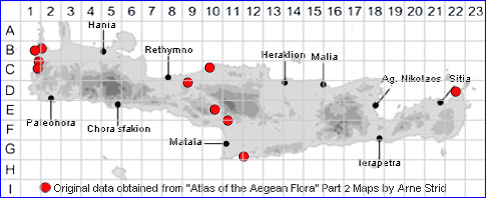
SPECIES DESCRIPTION
PARONYCHIA ECHINULATA
Family and Genus:- See- CARYOPHYLLACEAE
Common Names:- None
Homotypic Synonyms:- None
Meaning:- Paronychia (Gr) Beside-nail, a name used by the Greek physician and
botanist Dioscorides, for its former use to treat whitlows.
Echinulata (Gr) Prickly.
General description:- Annual.
Stems:-
1) 2-20 cm, spreading or erect, usually much-branched.
Leaves:-
1) Ovate to oblong-lanceolate, reddish, with a pale, membranous margin, axis
aristate.
Flowers:-
1) Clusters, 3-8 mm diam.
2) Bracts, inconspicuous, shorter than the flowers.
3) Calyx, with hooked hairs at the base, and with an awn c. 1 mm or more, on the
calyx-lobes, usually straight.
Fruit:-
1) Achene, with a membranous pericarp.
Key features:-
1) Calyx, with hooked hairs at the base, and with an awn c. 1 mm or more.
2) Awn, on the calyx-lobes usually straight.
3) Leaves, ovate to oblong-ovate, reddish.
Habitat:- Sandy and rocky places by the sea, hillslopes and ridges with dry open
shrubby vegetation. 0-300(-600) m.
Distribution:- Widespread, but scattered in the Mediterranean region from Portugal
and S Spain to SW Anatolia and Lebanon. Limited distribution across Crete around
coastal areas mainly in the far west and east and central areas.
Flowering time:- Apr to early June.
Photos by:- Dr. Armin Jagel

Family and Genus:- See-
Homotypic Synonyms:-
Click here for a glossary of terms used.
Homotypic Synonyms:-
Click here for a glossary of terms used.